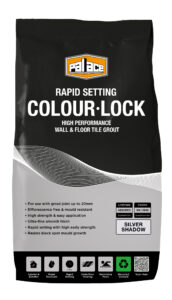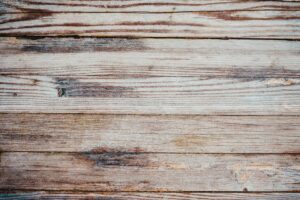DESIGN CONSIDERATIONS
All tile fixing should be carried out in accordance with BS 5385: WALL & FLOOR TILING Part 3 1989 – Code of practice for the design & installation of ceramic floor tiles and mosaics. Section 14.4 of this standard emphasises the need for timber substrates to be more than suitable for carrying the expected load and they be stiffened prior to tiling. Ceramic floor tiling should never be installed on floating timber floors subject to heavy static or dynamic loads.
This latter point emphasises the fact that a timber base alone may allow deflection, which is beyond the tolerance of the ceramic covering to be applied, therefore the need for rigid sheeting and screw-fixing is essential to ensure stability and rigidity.
Floating floors, by definition, are not fixed to the base substrate and so, before tiling a floating floor, it is essential to determine that its structural stability is sufficient to meet the requirements of BS 5385, part 3, section 14.4.
A typical floating floor lies on a concrete base and is characterised by a layer of rigid insulation topped with flooring grade plywood or chipboard (18 – 20mm deep). The insulation layer should be of sufficient density to provide firm support to the overlaid board. Expanded polystyrene is not considered to be a suitable underlayment for a floating floor which is to receive ceramic. To further ensure the rigidity of this structure, the timber board can also be constructed as a raft fixed onto timber battens (45mm x 45mm) with the insulating material laid between them.
SUBSTRATE STRUCTURE
To prevent excessive deflection, it is essential that the board is 18mm – 20mm thick and that the insulating material is sufficiently dense and rigid to support the expected load without risk of excessive compression or movement.
Joints between the sections of chipboard should be tongue-and-groove located and bonded with a waterproof wood adhesive. Any dead joints between adjacent boards must be fully supported as butt-jointed edges to prevent deflection between the two.
All timbers used in the construction of the floor must be moisture-stabilised to the conditions expected within the finished location. Expected moisture-stability should be further protected by the installation of an effective damp-proof membrane within the base structure and provide sufficient heat and ventilation to control humidity within the service environment.
Timber surfaces receiving tiles should be clean, dust-free and clear of any surface coatings likely to impede the adhesive from forming an effective bond to the surface. The use of Tiler’s Primer (SBR) is also advised on all worn or porous timbers and composite boards.
The base substrate must also be even, level, stable and with no localised depressions or elevations likely to cause uneven compression of the insulation layer.
Where the above precautions have failed to secure a stable surface, free from deflection and movement, it will be necessary to overlay the existing board with water-resistant plyboard to a minimum 18mm resistant thickness, laid with staggered joints. Also, battens to support the boards should be fixed to the base substrate at 300mm centres and then install the insulating layer and overlaying boards prior to tiling.
N.B. Do not proceed to fix the tiles if, after all preparatory measures have been taken, the floating floor still shows signs of deflection or movement likely to exceed the rigidity required by the ceramic tiles when subject to the anticipated loading.
TILE FIXING
Use PALACE Super-Flex two-part adhesive laid using a floor-grade notched trowel to achieve a solid adhesive bed of not more than 6mm thickness.
GROUTING
Use PALACE Flexi-Grout for joints from 3mm up to 20mm wide. In grout situations where heavy trafficking is likely to result in more movement, Flexi-Grout mixed with Palaflex additive (pre-diluted 1:1 grout (pre with water)) will provide even greater movement tolerance.
N.B. All polymer-modified grouts should be cleaned from tile surfaces within 1 hour of being applied as they can be extremely difficult to remove when set.
MOVEMENT JOINTS
It is essential to ensure that the full perimeter of all floating floors is sealed with a silicone sealant-based movement joint to a minimum of least 6mm width (in accordance with BS 5385: Part 3 – 1989, clause 19 to 23). This requires joints at all perimeters of the tiled area, coincidental with existing structural movement joints in the substrate and across large floor areas at 8 to 10m intervals.



